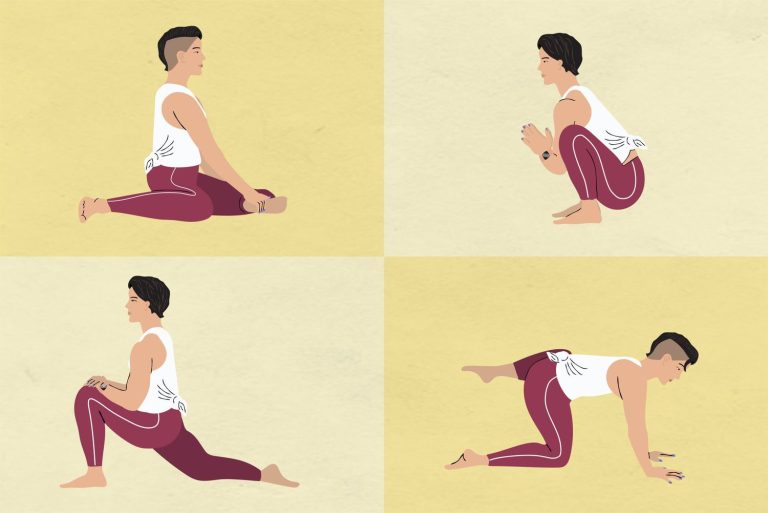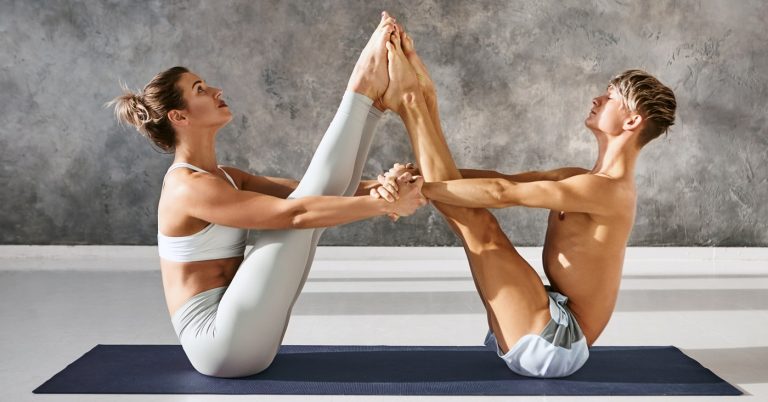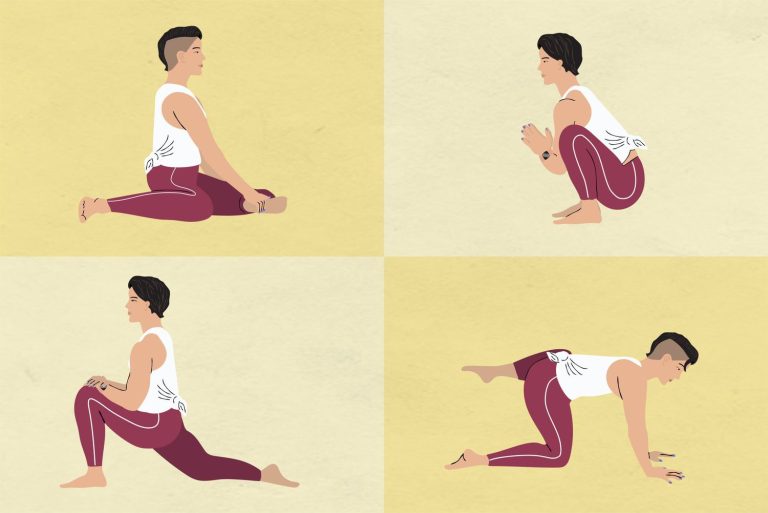How to Open Up Hips: Improve Mobility and Flexibility for Better Health
Are you feeling the strain of tight hips? The discomfort and pain can really put a damper on your daily activities.
But fear not! In this article, we have the ultimate guide on how to open up those stubborn hips and finally find relief.
We’ll explore an array of stretches and exercises that target those tight muscles, offering you a chance to break free from the grips of tension. And if you’re up for a challenge, we’ll even show you how to incorporate weights and resistance bands to take your hip-opening journey to the next level.
Get ready to unlock your hips and embrace a life of newfound flexibility and comfort!
how to open up hips
To open up your hips, you can perform a variety of hip flexor stretches and exercises. Tight hips can cause discomfort, pain, and added pressure on the knees and lower back.
Start by warming up before stretching and focus on counting your breaths instead of seconds. Modify stretches to accommodate your individual circumstances.
Some effective stretches include the standing lunge stretch, kneeling hip-flexor stretch, and spiderman stretch. Additionally, exercises like the pigeon pose, fire hydrant exercise, clamshells, and seated internal hip rotation can target different muscles in the hips and improve flexibility.
Keep in mind that if you have knee problems, certain exercises should be avoided. Set goals, start small, experiment with different techniques, and listen to your body.
You can use props like yoga blocks, straps, a chair, or pillows to modify exercises and make them more accessible or safe. For an extra challenge, incorporate weights or resistance bands.
Specific exercises include using a strap to pull your legs toward your chest while lying on your back, sweeping your legs from side to side and front to back while standing, and standing tall and bending and raising your knees above hip height. Other exercises such as a hip hinge, dog and pony movements, and abductor and adductor side leg lifts can also open up the hips.
Key Points:
- Perform hip flexor stretches and exercises to open up your hips
- Warming up before stretching and focusing on counting breaths instead of seconds is important
- Effective stretches include standing lunge, kneeling hip-flexor, and spiderman stretches
- Exercises like pigeon pose, fire hydrant, clamshells, seated internal hip rotation target different muscles in the hips
- Modify exercises if you have knee problems and set goals, start small, and listen to your body
- Use props like yoga blocks, straps, a chair, or pillows to modify exercises and make them more accessible or safe
Sources
https://www.healthline.com/health/opening-hips
https://greatist.com/move/opening-hips
https://health.clevelandclinic.org/do-hip-opening-exercises-actually-provide-relief-for-tight-hips/
https://www.prevention.com/fitness/g20457906/12-yoga-poses-to-open-your-hips/
Check this out:
💡 Pro Tips:
1. Incorporate dynamic stretches into your routine: Dynamic stretches involve moving parts of your body through a full range of motion, helping to warm up and loosen your hips before more intense exercises.
2. Don’t forget about lateral movements: While many hip stretches focus on the front and back, it’s important to also incorporate exercises that target the side-to-side movements of your hips. This can include lateral lunges, side leg lifts, or even dance movements like the “grapevine.”
3. Engage your core: Strengthening your core muscles can help stabilize your hips and improve overall hip mobility. Incorporate exercises like planks, Russian twists, or bicycle crunches into your routine to activate and strengthen your core.
4. Try foam rolling: Foam rolling can help release tension and knots in your hip muscles. Roll your hips over a foam roller, focusing on any areas of tightness or discomfort. This can be especially beneficial after a workout or while experiencing hip pain.
5. Take regular breaks from sitting: Prolonged sitting can contribute to tight hips. Make a conscious effort to take regular breaks throughout the day, standing up and stretching your hips for a few minutes every hour or so. This can help prevent stiffness and promote overall hip flexibility.
Causes And Effects Of Tight Hips
Tight hips can be a common issue for many individuals, and the causes can vary. One underlying cause of tight hips is overuse, often seen in people who participate in activities that require repetitive hip movements, such as running or cycling.
On the other hand, inactivity can also lead to tightness in the hips due to the lack of regular movement and stretching.
The effects of tight hips can range from discomfort and pain to additional pressure on the knees and lower back. When the hips lack flexibility and mobility, the body compensates by placing strain and stress on other areas, such as the knees and lower back.
This can result in various problems, including knee pain, lower back pain, and even poor posture.
To alleviate the discomfort and prevent further issues, it is essential to focus on opening up the hips and improving their flexibility and mobility.
Effective Hip Flexor Stretches And Exercises
Performing hip flexor stretches and exercises is an effective way to open up the hips and relieve tension. These stretches and exercises target the muscles in and around the hips, promoting flexibility and mobility.
Here are some key stretches and exercises you can incorporate into your routine:
- Standing Lunge Stretch: Step forward with one foot into a lunge position, keeping the back leg straight. Slowly lower your body into the lunge while keeping your back upright.
You will feel a stretch in the hip flexors of the back leg. Hold for 30 seconds on each leg.
- Kneeling Hip-Flexor Stretch: Kneel on one knee with the other foot planted in front of you. Lean forward into the front leg, feeling the stretch in the hip flexor of the back leg.
Hold for 30 seconds on each side.
- Spiderman Stretch: Begin in a push-up position and bring one foot forward, placing it outside of the hand on the same side. Lower your body down, keeping the back leg straight.
You will feel a stretch in the groin and hip area. Hold for 30 seconds on each side.
- Pigeon Pose: Start in a push-up position and bring one knee forward, placing it behind your hand on the same side. Extend the other leg behind you, keeping it straight.
Slowly lower your body down, feeling the stretch in the hip of the bent leg. Hold for 30 seconds on each side.
Stretching Tips For Opening Up The Hips
When it comes to stretching and opening up the hips, there are several key tips to keep in mind to maximize the benefits and minimize the risk of injury.
-
Warm Up: Always warm up before beginning any stretching routine to prepare the body for movement. This can be done through light cardiovascular exercises such as jogging or skipping.
-
Counting Breaths: Instead of timing your stretches by seconds, try counting breaths. This allows you to focus on your breath and relax into the stretch.
Aim for 6-8 deep breaths in each stretch.
- Modify Stretches: Adjust stretches based on your individual circumstances. For example, if you struggle with balance, use a chair or wall for support.
If you experience discomfort in a specific stretch, modify it slightly to find a more comfortable position.
- Use Props: Props such as yoga blocks, straps, a chair, or pillows can be incredibly helpful for modifying exercises and making them more accessible or safe. Place a block under your hand during a lunge stretch to bring the floor closer to you, or use a strap to assist in pulling your legs towards your chest while laying on your back.
Key Exercises And Stretches To Improve Hip Flexibility
Improving hip flexibility can be achieved through a combination of exercises and stretches that target the different muscles in the hips. Here are some key exercises and stretches to incorporate into your routine:
- Fire Hydrant Exercise: Start on all fours with hands directly under shoulders and knees under hips. Lift one knee out to the side, mimicking a dog lifting its leg to hydrate a fire hydrant.
Lower the leg back down and repeat on the other side. Aim for 10-12 repetitions on each side.
- Clamshells: Lie on your side with your knees bent, and legs stacked on top of each other. Keep your feet together and slowly lift the top knee away from the bottom knee while keeping your feet together.
Lower the knee back down and repeat on the other side. Aim for 10-12 repetitions on each side.
- Seated Internal Hip Rotation: Sit on the edge of a chair or stool with your feet flat on the ground. Place a ball or pillow between your knees and squeeze your knees together, engaging the inner thigh muscles.
Hold this squeeze for 5-10 seconds and then release. Repeat 10-12 times.
Exercise Modifications And Considerations For Knee Problems
While opening up the hips is important, it is crucial to consider any existing knee problems and modify exercises accordingly. Some exercises may put unnecessary strain on the knees, exacerbating any discomfort or pain.
Here are some modifications and considerations for exercises when dealing with knee issues:
-
Avoid Deep Squats: Deep squats can place a significant amount of stress on the knees. Consider using a chair or doing partial squats to reduce the range of motion and decrease pressure on the knees.
-
Opt for Low-Impact Exercises: Choosing low-impact exercises, such as swimming or cycling, can help to reduce the impact on the knees while still working on hip mobility. These exercises provide cardiovascular benefits without excessive strain on the knee joints.
-
Consult a Healthcare Professional: If you have specific knee problems, it is always advisable to consult with a healthcare professional or physical therapist. They can provide personalized advice and guide you in selecting suitable exercises and stretches that won’t aggravate your knee issues.
Tips For Effective Hip Opening And Flexibility Training
To maximize the effectiveness of your hip opening and flexibility training, it is important to follow these tips:
-
Set Goals: Set specific goals for your hip opening journey. Whether it’s increasing flexibility, relieving pain, or improving performance in a particular activity, having a clear goal can help you stay motivated and track your progress.
-
Start Small: Begin with shorter durations and lower intensity stretches and exercises, gradually increasing as your flexibility improves. Avoid pushing yourself too hard in the beginning, as this may lead to injury.
-
Experiment With Techniques: Explore different techniques and variations of stretches and exercises to find what works best for you. Everyone’s body is different, so it’s essential to find the methods that feel most effective and comfortable for your individual needs.
-
Listen To Your Body: Pay close attention to how your body responds to each exercise and stretch. If you feel sharp pain or discomfort, ease off or modify the movement to prevent injury.
It’s important to push yourself, but not to the point of pain or strain.
Remember, consistency is key when it comes to opening up your hips and improving flexibility. Incorporate these exercises and stretches into your routine regularly, and over time, you will notice significant improvements in hip mobility and overall health.
By following these tips and remaining dedicated to your hip opening journey, you can enjoy improved mobility, reduced pain, and greater flexibility for better health.
Sources:
– [1] Mayo Clinic: Stretching and Flexibility
– [2] OrthoInfo: Hip Conditioning Program
– [3] Healthline: Knee-Friendly Exercises]







